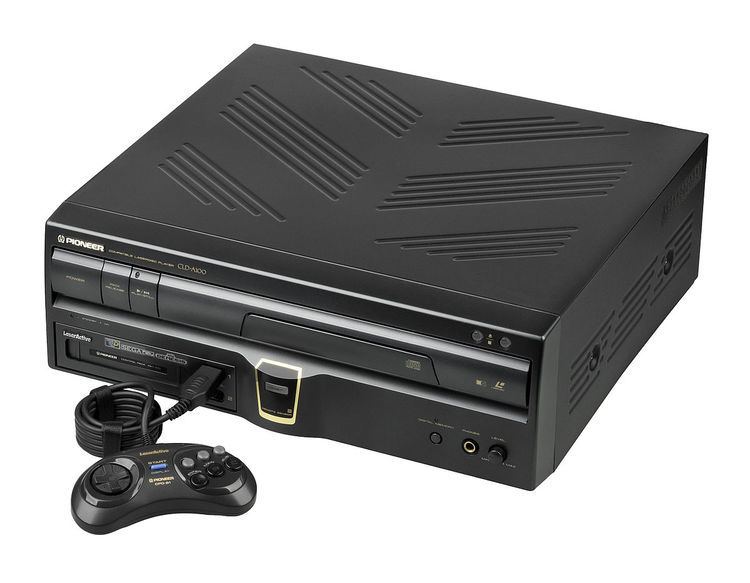Generation Fourth generation | Product family Laserdisc Introductory price ¥89,800$970.00 | |
 | ||
Release date JP: August 20, 1993NA: September 13, 1993 | ||
The LaserActive (レーザーアクティブ, RēzāAkutibu) is a converged device and fourth-generation home video game console capable of playing Laserdiscs, Compact Discs, console games, and LD-G karaoke discs. It was released by Pioneer Corporation in 1993. In addition to LaserActive games, separately sold add-on modules (called "PACs" by Pioneer) accepts Mega Drive/Genesis and PC Engine/TurboGrafx 16 ROM cartridges and CD-ROMs.
Contents
Pioneer released the LaserActive model CLD-A100 in Japan on August 20, 1993 at a cost of ¥89,800, and in the United States on September 13, 1993 at a cost of $970. An NEC-branded version of the LaserActive player, the PCE-LD1, was released on December 1993, which was priced identically to the original system and also accepted Pioneer's PAC modules. The LaserActive has no regional lockout, allowing software from any region to be played on any system.‹See TfD›
PAC modules
In the headings below, the Japanese model number occurs first, followed by the North American model number.
LaserActive 3-D Goggles
The LaserActive 3-D Goggles (model GOL-1) employ an active shutter 3D system compatible with at least four 3D-ready LD-ROM software titles: 3-D Museum (1994), Vajra 2 (1994), and Virtual Cameraman 2 (1994), and 3D Virtual Australia (1996). 3D Virtual Australia was the last software title published for the LaserActive.
The goggles are also compatible with the Sega Master System, and are interchangeable with the SegaScope 3-D Glasses. They can also be used to view 3-D images from autostereograms.
A goggle adapter (model ADP-1), packaged and sold separately from the 3-D Goggles, enables the user to connect one or two pairs of goggles to the CLD-A100.
Games
The standard LaserActive games were on Laserdisc encoded as an LD-ROM. An LD-ROM had a capacity of 540 MB (where digital audio would have normally been stored) with 60 minutes of analog audio and video.
Contemporary devices
In the early 1990s, a number of consumer electronics manufacturers designed converged devices around CD-ROM technology. At the time, CD-ROM systems were expensive. The LaserActive was one of several multipurpose, multi-format, upmarket home entertainment systems with software stored on optical discs. These systems were premised on early conceptions of multimedia entertainment.
Some comparable systems are Commodore CDTV, Philips CD-i, 3DO Interactive Multiplayer, and Tandy Video Information System.
